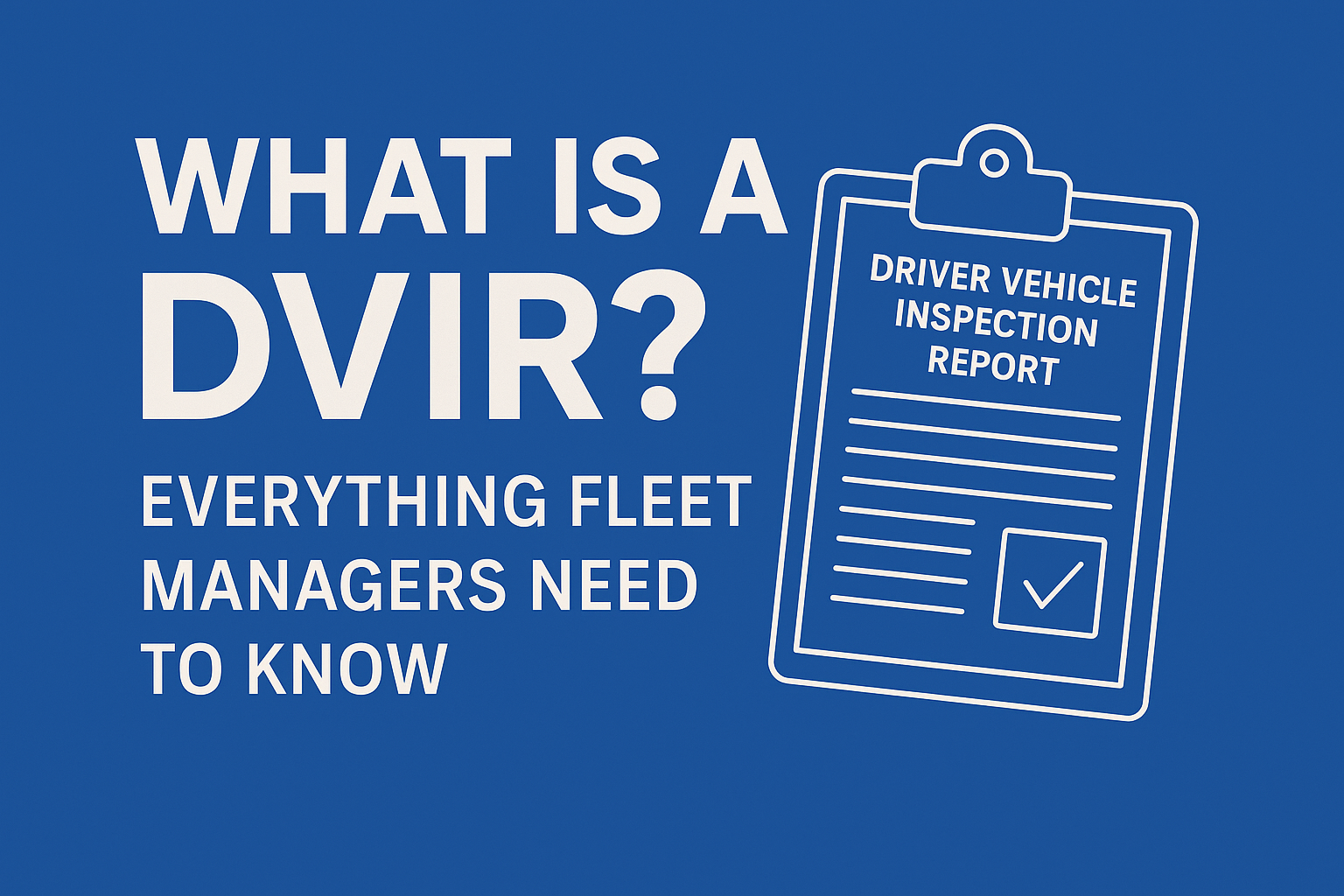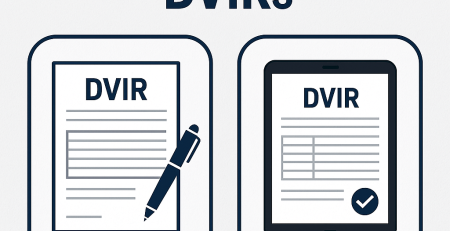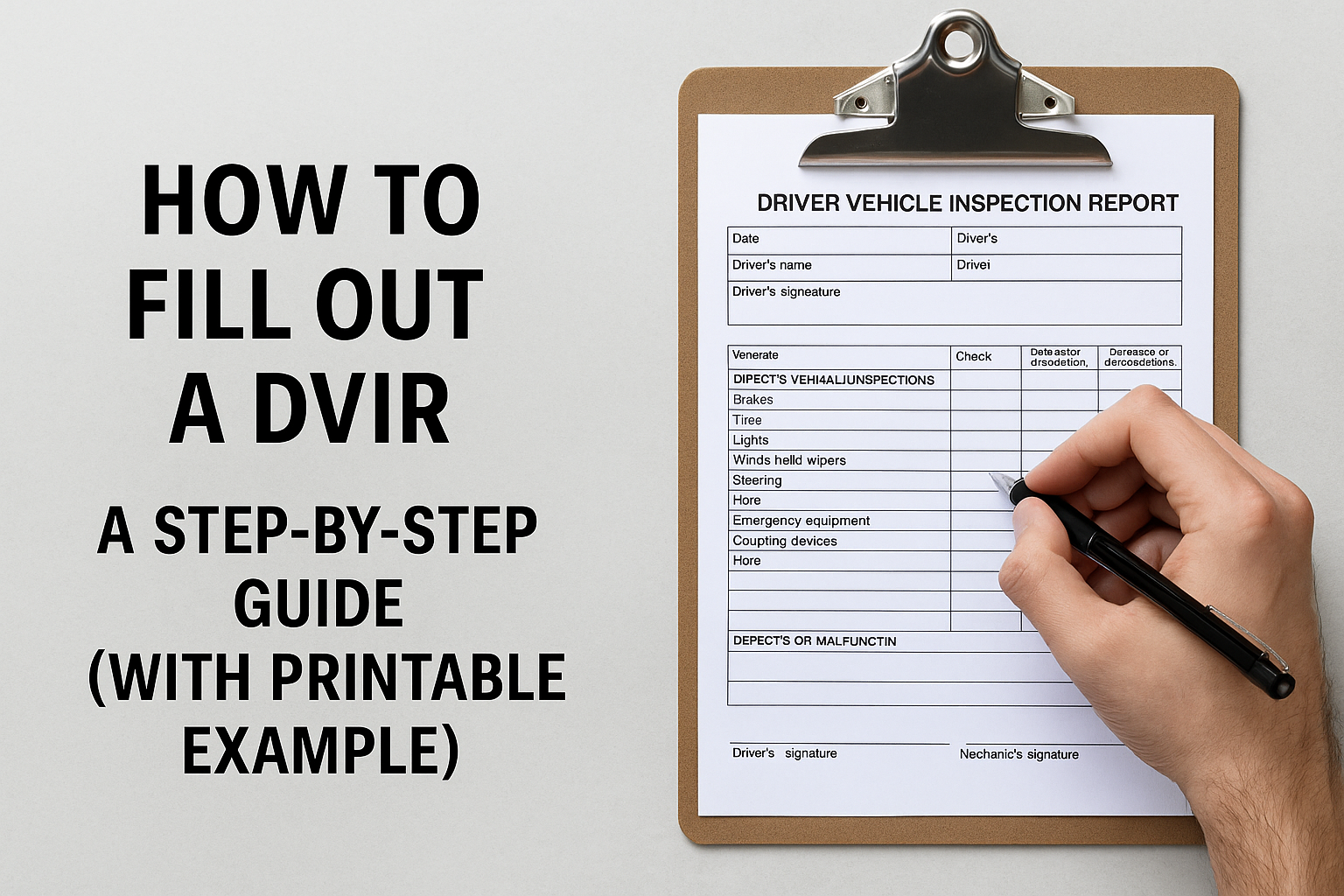What is a DVIR? Everything Fleet Managers Need to Know
In the world of commercial transportation, safety and compliance are everything. One overlooked form, the Driver Vehicle Inspection Report (DVIR), plays a crucial role in ensuring that commercial vehicles are roadworthy and fleets remain compliant with federal regulations. Whether you manage a small fleet of delivery vans or a nationwide trucking operation, understanding DVIRs is non-negotiable.
This guide breaks down what a DVIR is, who needs it, why it matters, and how to manage it effectively to stay compliant — and efficient.
What Is a DVIR?
A Driver Vehicle Inspection Report (DVIR) is a formal record completed by commercial vehicle drivers to document the inspection of their vehicle before or after operation. It’s required by the Federal Motor Carrier Safety Administration (FMCSA) and is a key component of any DOT-compliant safety program.
DVIRs help ensure that mechanical issues, safety hazards, and defects are identified and corrected before a vehicle hits the road. Think of it as your fleet’s first line of defense against accidents, violations, and unexpected downtime.
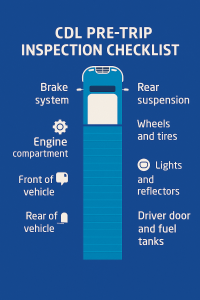 Who Needs to Fill Out a DVIR?
Who Needs to Fill Out a DVIR?
According to the FMCSA, any driver operating a commercial motor vehicle (CMV) — such as trucks, buses, or vans weighing over 10,000 pounds — must complete a DVIR at the end of each workday.
While owner-operators must fill it out themselves, fleet drivers typically submit reports to their safety managers or dispatchers. In some cases, both a pre-trip and post-trip inspection may be required, depending on the employer’s policy or the type of operation.
What Should Be Included in a DVIR?
A standard DVIR covers all key vehicle systems that could impact safe operation. At a minimum, it should include checks for:
- Brakes (service and parking)
- Steering mechanism
- Lights and reflectors
- Tires and wheels
- Windshield wipers
- Mirrors
- Horn
- Emergency equipment
- Coupling devices (for trailers)
Drivers must note any defects or issues and indicate whether or not the vehicle is safe to operate. If a defect is reported, it must be reviewed and signed off by a mechanic or supervisor before the vehicle can be used again.
Why Are DVIRs Important?
DVIRs serve three vital functions:
1. Compliance
DVIRs are a federal requirement under 49 CFR §396.11. Failing to complete or retain DVIRs can result in hefty DOT fines, violations during audits, and worse — potential liability in the event of an accident.
2. Safety
Routine inspections catch problems early, preventing breakdowns and reducing the risk of accidents. A blown tire or faulty brake system can be catastrophic — and a simple DVIR can prevent that.
3. Fleet Maintenance Efficiency
DVIRs create a paper trail of recurring issues. Over time, they help fleet managers identify problem vehicles, prioritize repairs, and optimize maintenance schedules.
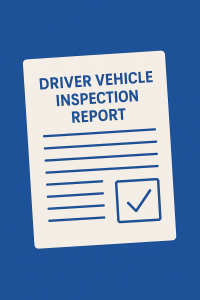 Paper DVIR vs. Digital DVIR
Paper DVIR vs. Digital DVIR
Technology has made digital DVIRs popular, especially for fleets using telematics platforms. However, paper DVIR pads remain the go-to solution for small fleets, independent operators, and companies looking for simplicity and reliability.
Benefits of paper DVIR pads:
- No apps or logins required
- Easy for drivers of all tech levels
- Instant hard copy for records
- DOT-friendly and audit-ready
- No risk of device failure or battery issues
At Wells & Finch, we offer professional-grade DVIR pads designed for daily use, built with clear sections, carbonless copies, and heavy-duty materials that stand up to field conditions.
How Long Should You Keep DVIRs?
The FMCSA requires fleets to retain completed DVIRs for at least 3 months. These records may be reviewed during audits, investigations, or inspections. Failure to retain DVIRs is considered a serious compliance issue.
We recommend organizing DVIRs by vehicle or driver and using labeled storage or digital scans to ensure everything is easy to access.
Common Mistakes to Avoid
- Skipping Inspections – Rushing through or skipping DVIRs entirely is a red flag. It exposes the fleet to fines and risks.
- Incomplete Forms – A DVIR with missing sections or signatures is considered invalid.
- Ignoring Reported Issues – If a driver notes a defect and nothing is done, it could become a legal liability.
- Poor Recordkeeping – Losing or misfiling reports can hurt you in audits.
Final Thoughts
DVIRs aren’t just a bureaucratic checkbox — they’re a legal safeguard and a powerful maintenance tool. For fleet managers, building a DVIR culture is one of the smartest ways to improve safety, reduce costs, and stay on the good side of regulators.
Looking for high-quality, FMCSA-compliant DVIR pads?
👉 Shop Wells & Finch DVIR Pads — Built for busy drivers. Designed for compliance. Ready for the road.
Need a printable DVIR template?
Grab our free downloadable PDF template here — perfect for training or as a backup form.

